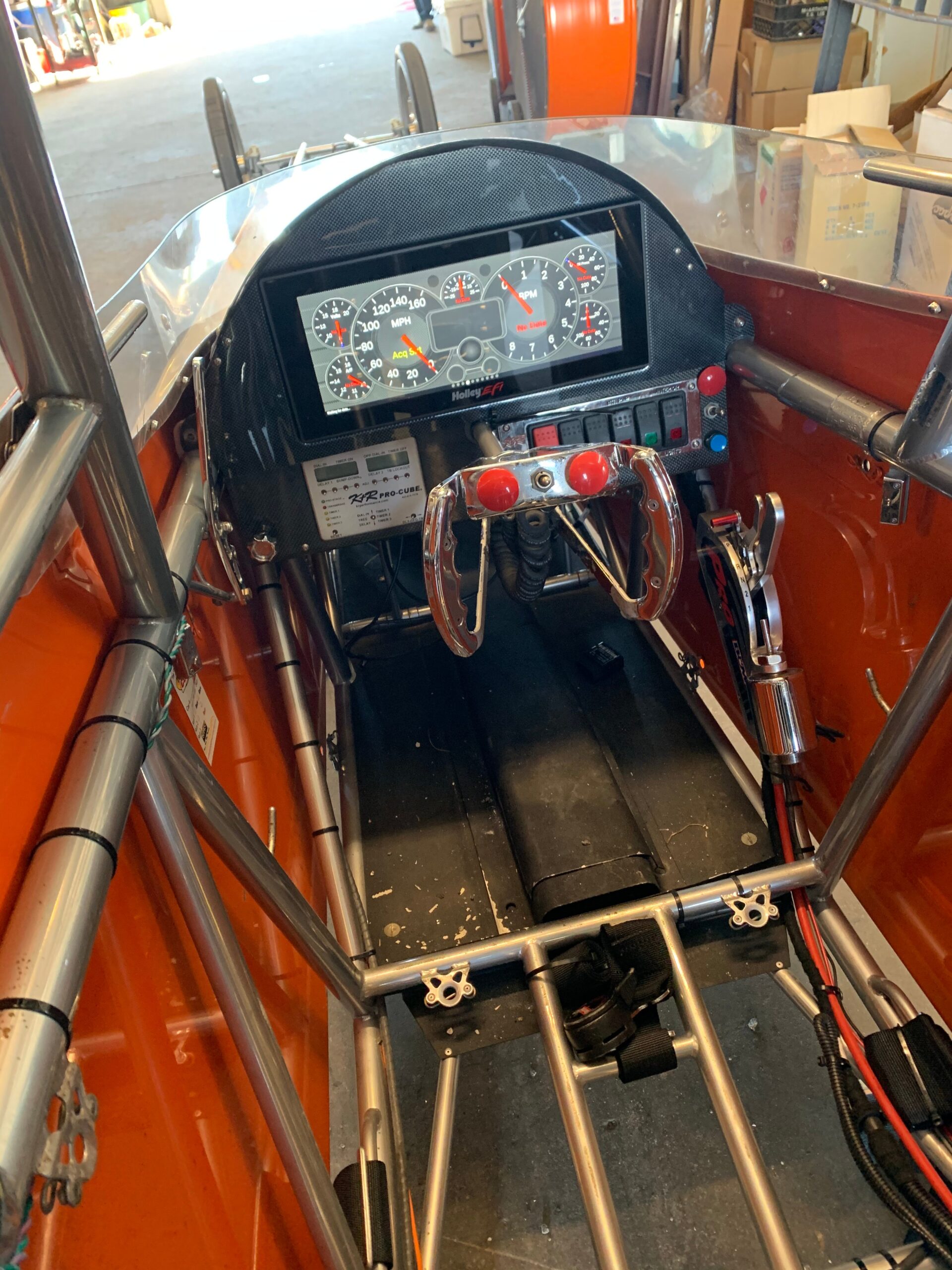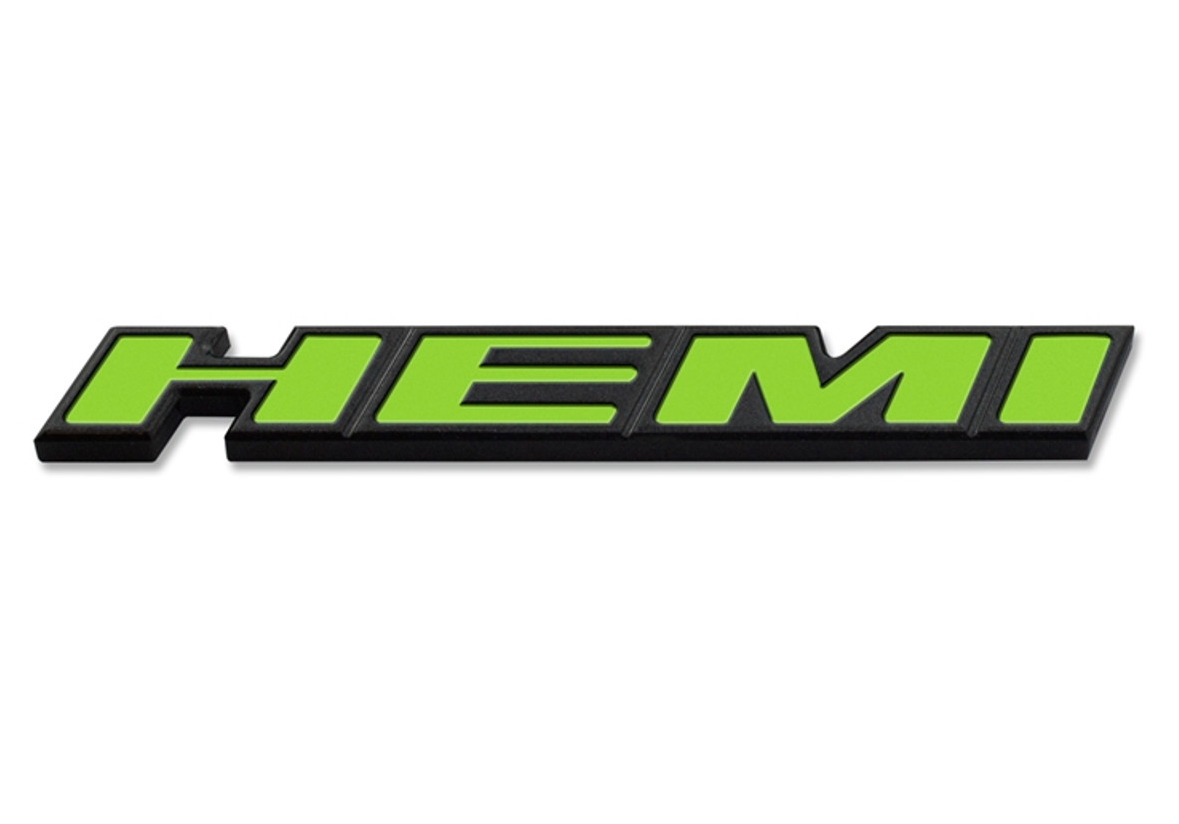“We’ve always been a Mopar family,” says Donald Scheid, a software developer from Bradenton, Florida. “Between my dad and I, we’ve probably had about 35 Mopars over the last decade or so – Challengers, SRT Jeeps, Ram trucks – we’ve run the gamut of the late model, Gen III Hemi stuff.”
Given his affinity for all things Hemi, it should come as no surprise that Scheid’s first experience in a Challenger SRT Hellcat made a lasting impression. “You punch the thing at 70 MPH and you can literally light the tires up and walk it sideways,” he explains. “It wasn’t really the go-to car for me because of the limited grip, but I thought, ‘man, if they put that engine in a vehicle with all-wheel drive, that would be something.”
And in 2017, FCA answered that call with the Hellcat-powered Grand Cherokee Trackhawk, a 5300-pound SUV that can consistently lay down 3.4-second 0-60 MPH sprints. Scheid snatched up one of the first examples offered for sale in his area, and it wasn’t long before he had the urge to get it in the staging lanes at his local drag strip. It’s there where he offered up some seat time to his friend Jeff Keen, an accomplished bracket racer, to get his take on SRT’s latest and greatest.

Providing real-time performance data from the Hellcat engine is a Holley 12.3in Digital Dash.
“He was really impressed, and mentioned that he thought it would be a great option for bracket racing,” Scheid recalls. “It was super consistent, running 7.60s in the eighth mile. Jeff suggested throwing some modifications at it to get it into a 7.50 bracket, so I started reaching out to some tuners. And that’s when I realized that there just aren’t very many out there who’re really supporting these cars right now.”
He started out with the basics, installing a tune and data logging at the track to get it further dialed in, then moved on to bolt-ons, eventually getting the Trackhawk into that 7.50 bracket and going rounds at several events. One evening, the two were shooting the breeze over some beers at the shop when Scheid pointed to one of Keen’s dragsters, which lacked an engine at the time. “I asked him if he’d ever thought of putting a Hellcat in it,” he says. “He kind of laughed it off, but we both know that these engines make serious power and can be consistent. He was initially hesitant because there was a lot we’d have to figure out in order to make it work in a dragster chassis. But that’s exactly the kind of challenge I was looking for.” And thus, the Hellcat Dragster project was born.

After Scheid’s Jeep Grand Cherokee SRT Trackhawk proved to be a consistent a competitive entry in local bracket races with Keen at the helm, Scheid suggested that they drop a Hellcat engine into a then-motorless Mullis dragster that Keen was storing at Scheid’s shop.
Although installing the blown 6.2-liter Hemi into the 235-inch Mullis dragster chassis was relatively hassle-free, getting the modern power plant to play nice with the dragster’s various motorsport-specific systems was a different story. “There’s a lot of stuff for Gen I and Gen II Hemis, but really not much for Gen III for a build like this,” he tells us. “So it was things like getting the Meziere water pumps to work with it – the mounting plates weren’t really built to be put into a dragster. Fortunately my family owns a local metal shop with water jet machines and everything else, so I basically just started bringing over parts and saying, ‘OK – I need to adapt this to this.’ It took us a few months; a lot of that time was figuring everything out in CAD and making templates, and getting parts just took longer last year because of COVID.” Meanwhile, Scheid also began the search for a tuner who could make the Hellcat motor shine in a racing application.
That’s where AJ Berge and his company Hemituner Performance enter the picture. A Gen III Hemi specialist and a formidable competitor in his own right, Berge currently holds the title of the fastest Charger in the Modern Street Hemi series. “They were looking somebody who had a motorsport background to help them do a calibration for bracket racing,” Berge says. “And they were also looking for somebody who had a lot of experience working with Holley EFI systems.”
Berge knew the Mopar Performance ECU ultimately wasn’t going to cut it – not only because of its limited tuning potential, but also because of other specific needs of the application. “We knew we needed something with more control, but it also had to work within the context of this type of drag racing – if an official wanted to take a look at it, we needed something that would be easy to audit. And that’s why I suggested that we go with a Holley Dominator EFI system.”
While the Mopar ECU included with Hellcat crate engines allows for some adjustability, the team was well aware that it would only fit their needs up to a certain point. “We needed something that was geared more toward racing rather than a street build,” Berge says. “Beyond all the additional features the Dominator offers, you really have to be able to make changes quickly at the track – the factory ECU takes a minute or so to flash, and sometimes you just don’t have that kind of time. With the Holley system you plug it in, hit Enter and it’s done, and that can be crucial to a team’s competitiveness. Starting line RPM is hugely important – the way the car delivers power in the first 60 feet. If you go up there and see that it’s really greasy, you can have three or four different maps ready to go on the fly and make the switch right then and there.”
Outfitted with pulleys, dual fuel pumps, bigger injectors, and running 17.4 pounds of boost on a steady diet of E85, Scheid estimates the Hellcat mill is now making about 1050 horsepower at the crank. That has proven to be enough to get the 1750-pound dragster down the eighth mile in 4.58 seconds with Keen behind the wheel, making this the fastest Hellcat-powered machine out there right now.
“And with DA swings and everything else, it’s consistently running in the 4.62, 4.63 range,” Scheid says. “With this build, we really wanted to prove that it was feasible – that you could put a street car engine into a dragster and show that fuel injection is really where this stuff is going. And the reaction from people has been incredible – with this group of bracket racers, everybody has been extremely receptive to it. So we’re taking the data we’re collecting and the feedback we’re getting and we’re putting together a team of the best Mopar guys out there. We want to build not only drop-in applications, but also potentially a full-fledged, turnkey dragster with all the right stuff in it – something that can carry you into the future of bracket racing.”

“When they were still using the factory electronics, I jumped in to help them make that the best it could be,” AJ Berge of Hemituner Performance says. “And then once we proved that it was viable and consistent, it was time to step up to a Holley Dominator EFI system. There are certain rules and guidelines that need to be followed to race in the bigger events, and the factory computer doesn’t really fit into that.”
To get the Hemi to work with the FTI Performance two-speed Powerglide transmission, the team turned to ATI Performance to develop a custom midplate and a flexplate that would work in this application. Much of the initial legwork involved getting the Hellcat Hemi adapted to components it’s never been widely used with before. When the team ran into road blocks where parts simply didn’t exist, they fabricated their own.

The team initially installed the 10.4-inch Android tablet seen here to keep an eye on the proceedings, but Scheid says they switched over to a Holley Pro Dash when they stepped up to the Dominator ECU. “We were able to squeeze in the 12.3-inch screen – just barely!”

While the team wanted to take the Hellcat engine above and beyond its factory output, they also wanted to keep the build budget grounded and use widely available parts. To get the blown Hemi to over a thousand horsepower, they upgraded the injectors and added a second fuel pump, switched to E85, and bumped the factory blower’s boost up to 17.4 psi with 2.72 upper pulley and a 10-percent lower pulley. The 1750-pound Hellcat Dragster has posted a personal best ET of 4.58 in the eighth mile, which should put it squarely in 7-second territory in the quarter.

The Hellcat’s bottom end has been beefed up with ARP bolts, Mahle connecting rods, and forged pistons from CP-Carrillo, but the cam, cylinder heads, and blower are all factory-stock hardware.
